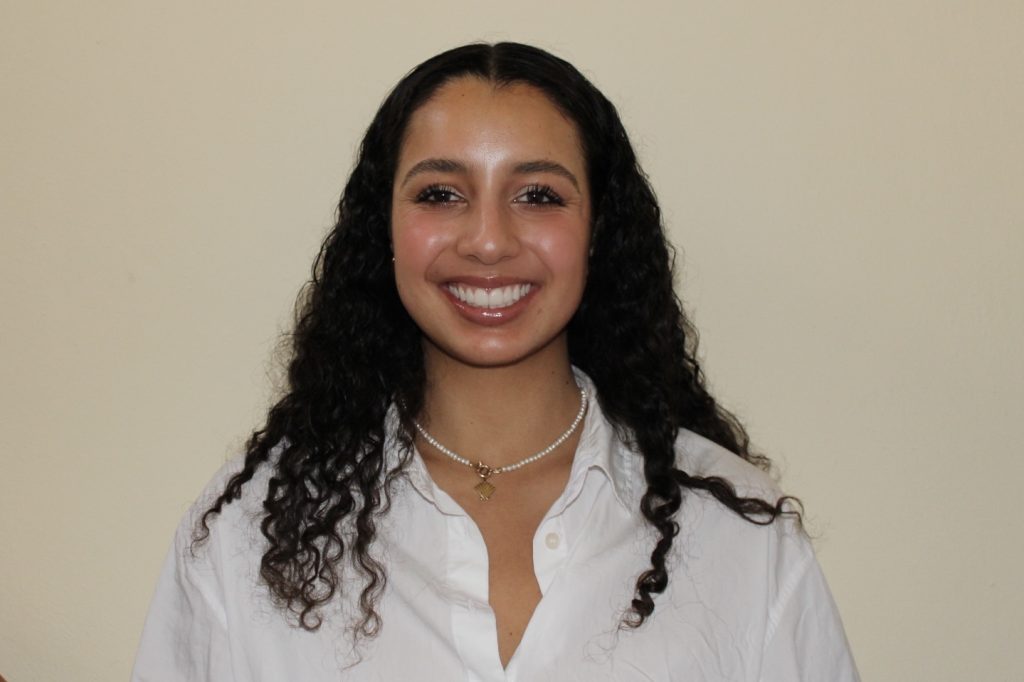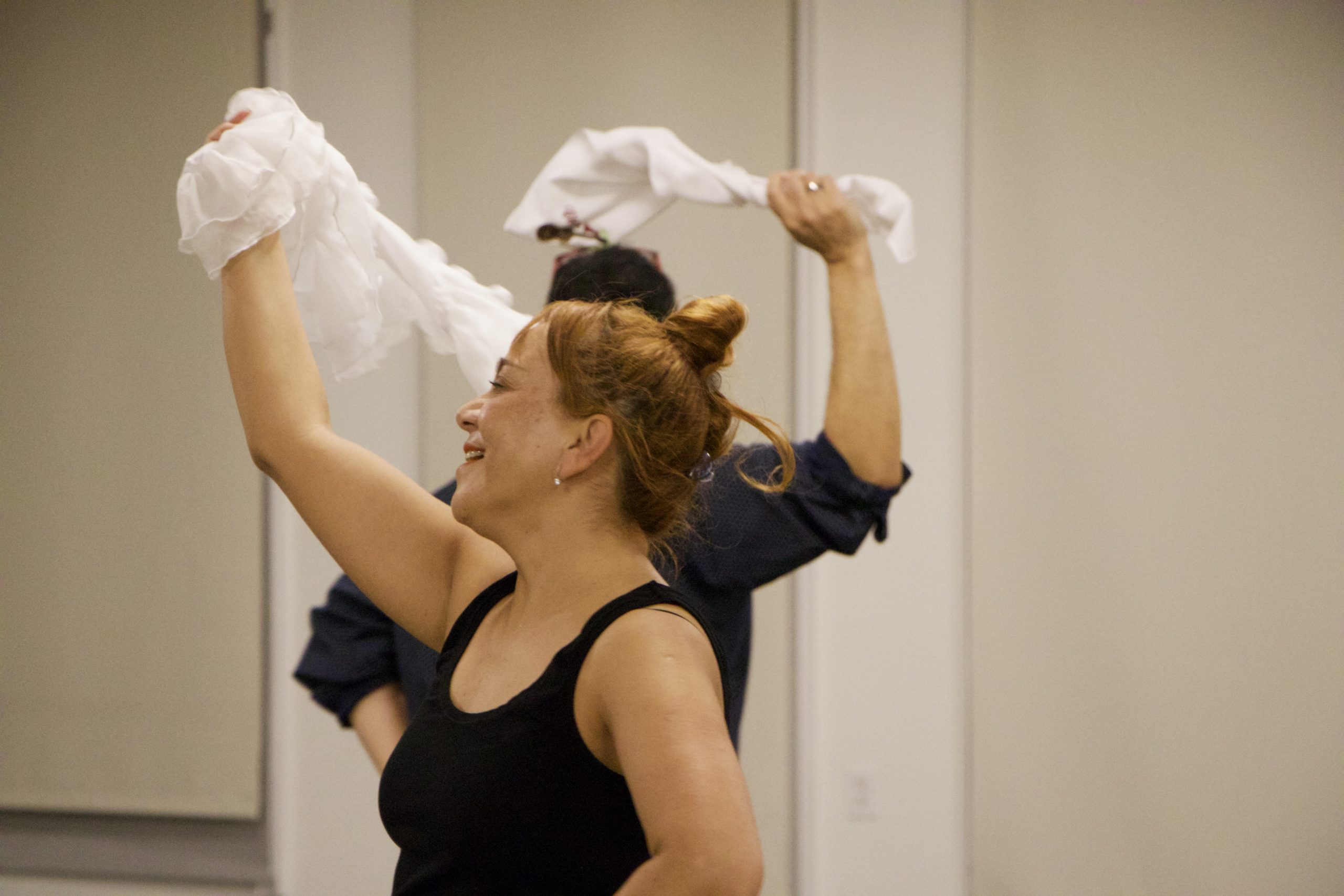The stomps of rhythmic footwork echo through the halls of El Centro de la Raza, as lively music fills the air and dancers spin to the beat.
For the members of Los Rebeldes de la Cueca, the Pacific Northwest’s only Chilean folk dance group, every performance and practice are more than dance. They are a celebration of identity, a connection between generations, and a home away from home.
“When you are an immigrant and you are away from your country for so long, you have this thirst to feel connected to your people,” said Kattia Rojas, a group member. “So, this group is a community, but it is more than that; it is a family.”
Los Rebeldes de la Cueca formed in 2017 when another Chilean dance group disbanded. Carlos Quilodrán, the current director, thought Chile’s traditions and culture should continue in Seattle. The cueca is at the heart of their performances.
The cueca is Chile’s national dance and a storytelling tradition and symbol of resilience. “La Reina de Chile,” meaning “The Queen of Chile,” is rooted in a blend of Spanish, African, and Indigenous influences.
During Chile’s 17-year dictatorship, cueca became an act of resistance, often performed as a form of protest.
Cueca tells a story. With playful footwork and twirling handkerchiefs, it mimics a courtship ritual full of flirtation and energy.
Today, for Chileans in Seattle, it is both a celebration and a statement: a reminder that their culture will not be erased.
“Of course, I want to be closer to my Chilean identity, but on top of that, I want the Chilean identity to continue to be in existence,” said Pedro Cerda, a member of the group. “We need to be into what is Latino, what is Chilean.”

Los Rebeldes de la Cueca poses for a photo in preparation for a performance at Talbot Hill Elementary on Oct. 3, 2024. The group performs dances from different areas of Chile and is currently practicing for the Foundation for International Understanding through Students Culturalfest in April.
Photo provided by: Carlos Quilodrán

Kattia Rojas and Karo Vielma-Rojas dance the cueca at rehearsal on Feb. 19. The duo use dance to feel closer to their community and connect back with Chilean culture.
Photography: Madison Rogers
The group has become a crucial space for preserving and celebrating Chilean culture while fostering a sense of belonging for Latinos in Seattle. Cueca brings people together: it is more than a dance.
“Even though Chile is not my country, cueca means a connection to my husband and his history, his roots, the traditions that he grew up with,” said Rojas, who is Costa Rican but married a Chilean. “So, to me, this has an important and special value.”
Her daughter, Karo Vielma-Rojas, shares this feeling of community. Having grown up in Seattle without meeting her Chilean relatives, she found a sense of cultural connection through the group.
“I have been dancing with this group since middle school and they have watched me grow up. Some members come and go, but the group has always had a strong connection,” said Vielma-Rojas.
Los Rebeldes de la Cueca’s core value is inclusivity. The group welcomes dancers of all backgrounds and embraces modern interpretations of tradition.
“We do not care if you are young or old, if you know how to dance or not, if you want to perform. You can just come to dance,” said Quilodrán. “We do not care if you want to dance with a girl or with a guy. The idea is to create a community and have fun.”
Chile is geographically isolated from most of Latin America and the United States, so Chilean culture is not as widely represented as other Latin American cultures. The dancers said this makes the work of Los Rebeldes de la Cueca even more vital.
“For countries closer to here, you have more chances to see part of your culture, but for Chilenos, just to hear our music and get close to us, I have seen people actually cry when we perform,” said Quilodrán.
The group frequently performs at schools, universities, and cultural festivities, such as Seattle’s annual Folklife, educating the community about Chilean traditions.
This year, they are performing at the Foundation for International Understanding through Students (FIUTS) Culturalfest in April at the University of Washington, dancing the cueca.

Pedro Cerda wears his espuelas (huasos spurs) to rehearsal on Feb. 19. Cerda moved to Seattle when he was 15 and regained his deep connection with Chilean culture through Los Rebeldes de la Cueca.
Photography: Madison Rogers
However, the members feel their most important connection is with elementary schools.
“You can be 100% American, but you do not have to be just that; you can be more,” said Rojas. “For kids, you can be a descendant of immigrants and love and cherish what your ancestors have brought with them and have tried to teach and preserve in you.”
None of this reach would be possible without El Centro de la Raza, where the group now practices in Beacon Hill. However, it is more than just a practice space; it is a cultural anchor.
In the 1970s, El Centro de la Raza welcomed Chilean political refugees with open arms and created a community.
Now, Los Rebeldes de la Cueca is the only link between the organization and Chileans. The group feels like it belongs at El Centro de la Raza and is grateful for its partnership.
The group’s deep sense of connection and familiarity keeps members coming back year after year. The group also reflects on the importance of staying connected to one’s culture.
“I danced cueca when I was little and now, I just needed to refresh that culture,” said Nelson Ruiz, a group member. Ruiz found his way back to Cueca two years ago and now brings his daughter along to pass down the tradition as it was passed to him.
With every performance, Los Rebeldes de la Cueca proves that dance is more than an art form—it is history, community, and a declaration of identity. Chileans and non-Chileans alike can celebrate the beauty of identity together.
“We can speak a different language, we can be really far away from our country. But if you see our clothes, it is not that different. If you look at a cowboy and then look at a huaso, in the end we are the same,” said Quilodrán. “We are just people. We have our own flavors, ideas, and colors, but in the beginning, we are one. That is the message we try to show.”

Madison Rogers is a senior at the University of Washington where she is studying Journalism and Public Interest Communication. Additionally, she is minoring in Nutrition. She is pursuing a career in sports with a deep passion for digital media and finding the stories that often go untold.
